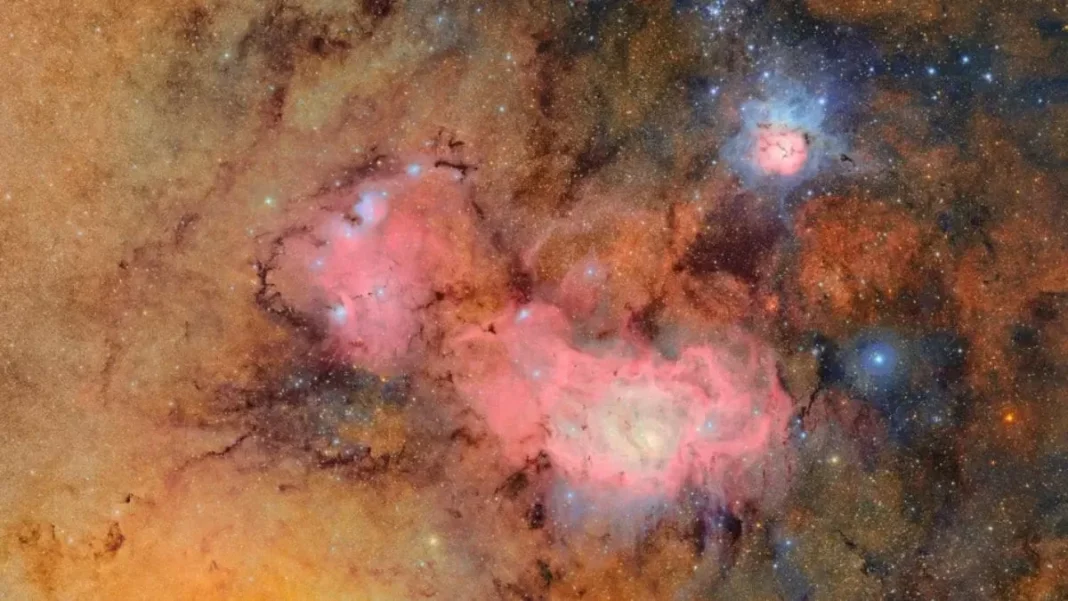The Rubin Observatory, formerly known as the Large Synoptic Survey Telescope (LSST), has recently revealed its first public images, providing a glimpse into the dynamic and mesmerizing universe we live in. These stunning images showcase the Lagoon and Trifid Nebulae, located 4,000 light-years away from Earth, in vivid detail. This marks the beginning of a decade-long sky survey that will revolutionize our understanding of the cosmos and transform the way scientists and the public observe the universe.
The Rubin Observatory, located in Chile, is a state-of-the-art facility designed to capture thousands of nightly exposures of the night sky. This ambitious project is a collaboration between the National Science Foundation (NSF), the US Department of Energy (DOE), and private funding from the Charles Simonyi Foundation. With its 8.4-meter mirror and sophisticated camera, the observatory will capture images of the entire visible sky every few nights, creating an unprecedented and comprehensive map of the universe.
The first public images released by the Rubin Observatory depict the Lagoon and Trifid Nebulae, two of the most iconic and beautiful objects in our galaxy. These nebulae, also known as stellar nurseries, are regions where new stars are born. The images reveal intricate details of gas and dust clouds, glowing with the light of young stars. They also showcase the vibrant colors and patterns that make these objects a favorite among astronomers and stargazers alike.
But the Rubin Observatory’s mission goes beyond capturing stunning images of the cosmos. The observatory will embark on a decade-long survey, called the Legacy Survey of Space and Time (LSST), that will delve into some of the most pressing questions in astrophysics. One of the main objectives of the survey is to explore dark matter, the mysterious substance that makes up about 85% of the universe’s mass but remains invisible to telescopes. By mapping the distribution of dark matter in the universe, scientists hope to gain a better understanding of its nature and role in the evolution of the cosmos.
In addition to dark matter, the LSST will also study dark energy, the unknown force that is accelerating the expansion of the universe. By observing the light from billions of galaxies, the survey will create a 3D map of the universe and shed light on the properties of dark energy. This could lead to groundbreaking discoveries and a better understanding of the fundamental laws that govern our universe.
But the Rubin Observatory’s impact will not be limited to the scientific community. With its vast database of images, the observatory will provide a treasure trove of data for the public to explore and engage with. Through its Education and Public Outreach (EPO) program, the observatory aims to inspire the next generation of scientists and engage the public in the wonders of the universe. From citizen science projects to virtual reality experiences, the EPO program will make the LSST data accessible and engaging for all.
The release of the first public images by the Rubin Observatory is an exciting milestone in the world of astronomy. It marks the beginning of a new era of discovery, where cutting-edge technology and ambitious projects like the LSST will unlock the secrets of the universe and transform our understanding of it. These stunning images of the Lagoon and Trifid Nebulae are just the beginning, and we can only imagine the wonders that await us as the observatory continues its decade-long survey.
In conclusion, the Rubin Observatory’s first public images have left us in awe and anticipation of the groundbreaking discoveries that lie ahead. With its advanced technology, ambitious mission, and commitment to public engagement, the observatory is poised to revolutionize our understanding of the universe and inspire future generations to look up at the night sky with wonder and curiosity. We can’t wait to see what other wonders the Rubin Observatory will reveal in the years to come.


